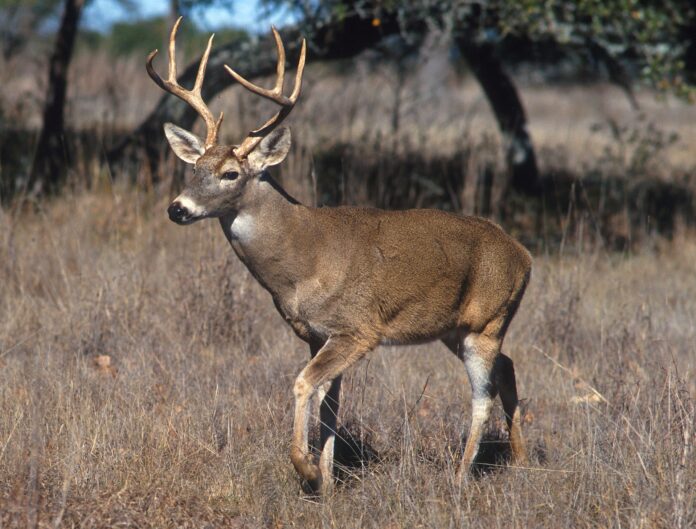Baton Rouge, LA (7/17/2023) – There is a deadly ailment lurking in the woods of northeast Louisiana that scientists don’t fully understand, and it has the potential to decimate the state’s deer population over time.
It is called chronic wasting disease, CWD for short, and is 100% fatal for infected animals, which includes mostly deer, elk and moose. The Louisiana Department of Wildlife and Fisheries (LDWF) first detected it in the state last year with 12 cases, all in Tensas Parish.
Sometimes referred to as “zombie deer disease,” chronic wasting disease infects a deer’s brain, causing the animal to lose control of its faculties. Symptoms include weight loss, drooling, confusion, droopy head, tremors and strange behavior such as repetitive walking in set patterns. Death is certain.
Wildlife officials had been monitoring the state for chronic wasting disease for 20 years before it showed up last hunting season. The disease was first discovered in Colorado back in 1967 and spread relatively slowly at first until multiple outbreaks appeared in new areas over the past few years.
Johnathan Bordelon, LDWF’s deer program manager, said the state will likely see more cases each hunting season as scientists try to better understand the disease.
Exactly what causes chronic wasting disease is the subject of much research. The pathogen is called a prion, which is a misshapen protein that enters the brain and tells other normal proteins to become malformed. The chain reaction eventually triggers cell death.
It is transmissible between hosts but is not alive like other pathogens such as viruses, bacteria and fungi. Scientists believe the CWD prion came originally from a mutation, Bordelon said.
Bovine spongiform encephalopathy, better known as mad cow disease, is caused by prions, as is scrapie, which occurs in sheep and goats. The most recent case of mad cow disease from human consumption in the U.S. was 20 years ago. There have been no known cases of scrapie in humans.
Prions in humans causes Creutzfeldt–Jakob disease, a fatal disorder with primary symptoms of dementia, memory loss and the deterioration of muscle coordination. The National Institutes of Health counts roughly 350 annual cases of Creutzfeldt–Jakob disease in the U.S.
Scientists have yet to find any evidence to suggest CWD can spread to humans, though they aren’t fully convinced that it’s impossible. As a precaution, the U.S. Centers for Disease Control and LDWF recommend hunters not eat any animals infected with CWD.
There are no treatments for CWD or any other prion diseases. Currently, the only option is to try to slow the spread while the science catches up, Bordelon said.
Part of the problem is that current testing methods aren’t very efficient. Unless someone happens upon a deer displaying symptoms of CWD and alerts wildlife officials, testing mostly occurs during hunting season in the fall and early winter.
Wildlife officials depend on hunters to cut off the deer’s head, place it on ice and drop it off at a LDWF office or call to schedule a pickup.
Bordelon explained that testing requires tissue samples taken from the lymph nodes or the brain stem.
“There’s all these logistical challenges to not only getting deer tested but getting them tested in a timely manner,” he said.
Fortunately, Louisiana has its own testing lab. Some states have to send their samples to other states and have to wait over a month to get the results. Louisiana’s test results take about two weeks, which Bordelon said is the quickest in the nation.
Learning more about the disease will require the continued cooperation of deer hunters and landowners.
Tensas Parish, as well as parts of Madison, Franklin and Concordia parishes, are currently under what’s called a CWD control area. LDWF has increased testing there and has established hunting-related restrictions that prohibit feeding, baiting and taking deer carcasses or parts outside the control area.
If CWD spreads to other parts of the state, LDWF will set up more control areas, Bordelon said.
An infected deer that eats from the ground can shed prions through its saliva. Studies have found those prions can contaminate the soil and infect another deer that comes into contact with that spot even years later.
“It’s not looking good based on what’s already been detected in other southeastern states,” Bordelon said. “It has the potential to limit population growth and lower that population over time even in the absence of hunting.”
Source: Louisiana Illuminator; Author: Wes Muller





